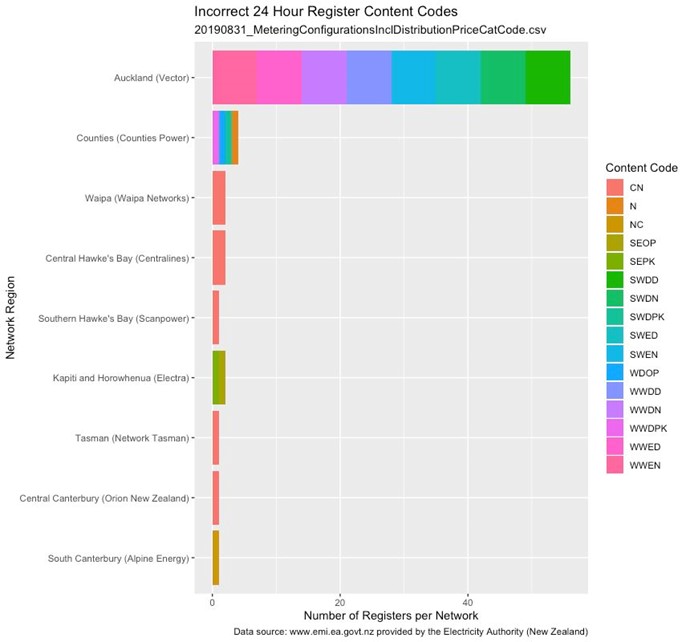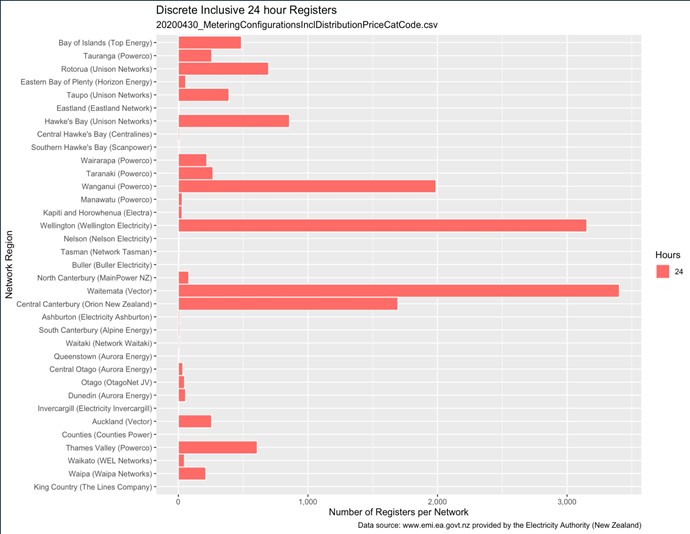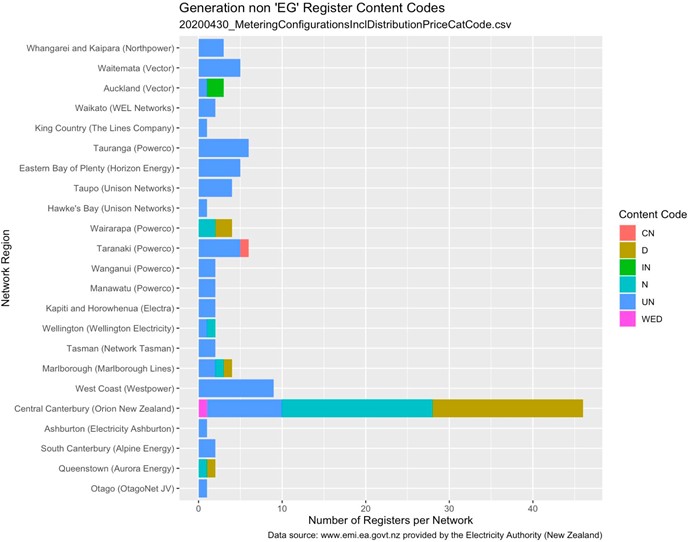My interest in meter register content codes started with the configuration of register content for billing and reconciliation of network charges for an electricity retailer. It soon became apparent that incorrect regsister content codes in the electricity Registry can stop a retailer from quoting, let alone switching and billing a customer.
At the back-end, retailers are charged for use of electricity network based on the volume reported against network tariff codes. Simplification of register content code mapping to network tariffs is another area of interest - as this can have a siginifcant impact on electricity retailer margin.
In order to place greater transparency on this issue, it is suggested that a MEP dataset be produced to indicate the party responsible for correcting incorrect register content codes and period of availability.
To this end, I have pulled apart a report from the "ICP and metering details" page on the EA's EMI website. Data are originally split out into combinations of meter registers, with respect to individual price category codes. For this analysis R statistical analysis software is employed to re-shape the data to facilitate counting of discrete register content code combinations.
Some charts are presented for review. I will attach the R code to enable other users to take a look throught the reshaped dataset.
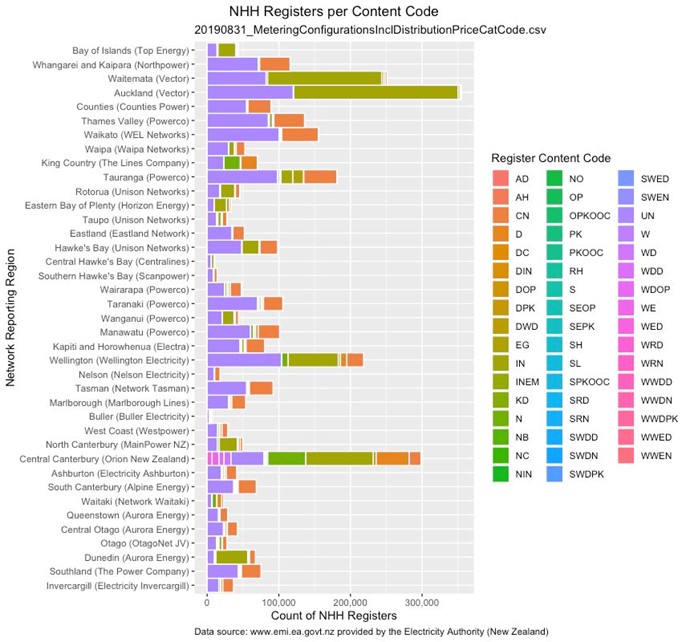
Reshaped to indicate the portion of register content codes per network.
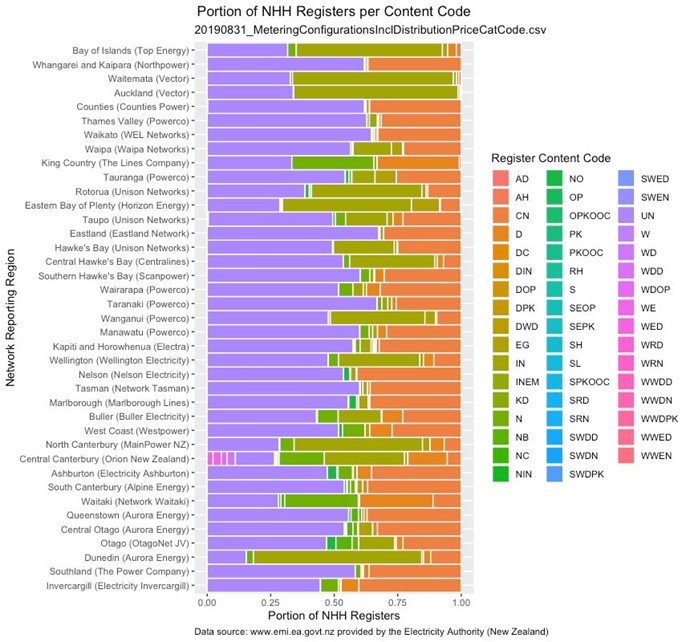
"I" flow register content codes with load codes instead of generation. Should the customer be charged or credited for generation of energy injected into the network?
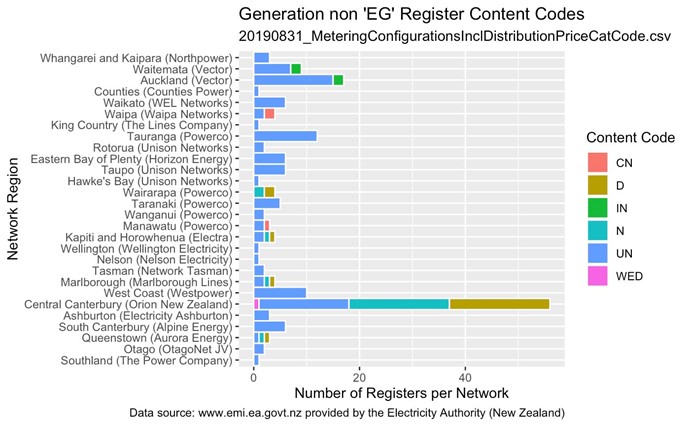
Where the correct "EG" register content code is applied to embedded generation, but the period of availaibilty is not 24 hours, this is also considered to be illegitimate. In some cases this may be due to meter configuration of load periods to match generation periods.
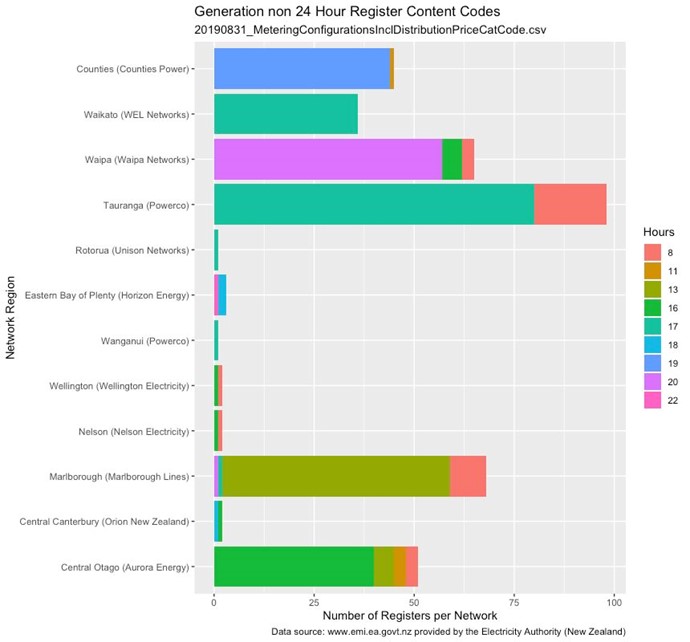
Where an embedded generation (EG) register is presented with load flow, should the customer be charged or credited for generation volume?
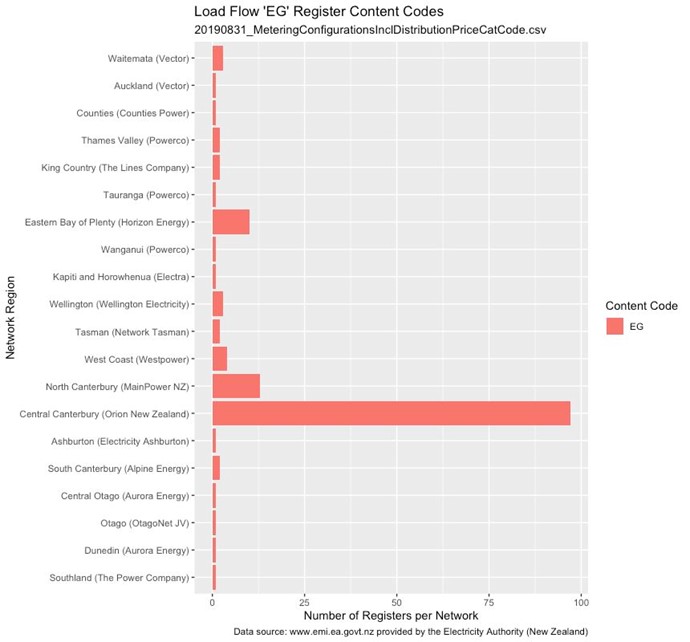
Uncontrolled registers with less than 24 hours availabiltiy. Should the customer pay full price, or do they get a discount for lower availability of supply?
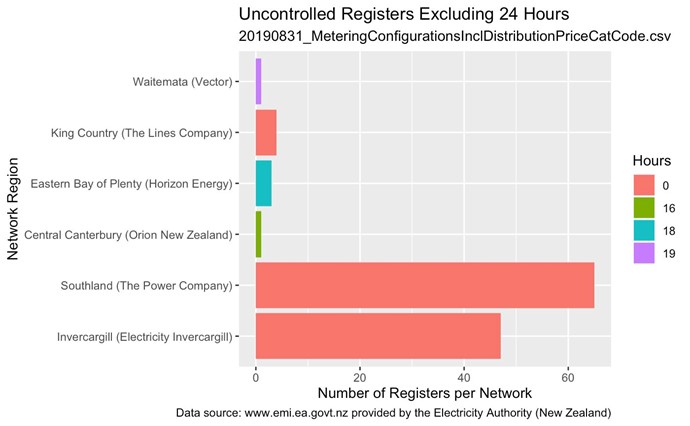
Inclusive registers with 24 hours of availability appears to be a contradiction - that being downstream controlled supply is available 24 hours per day - i.e. uncontrolled.
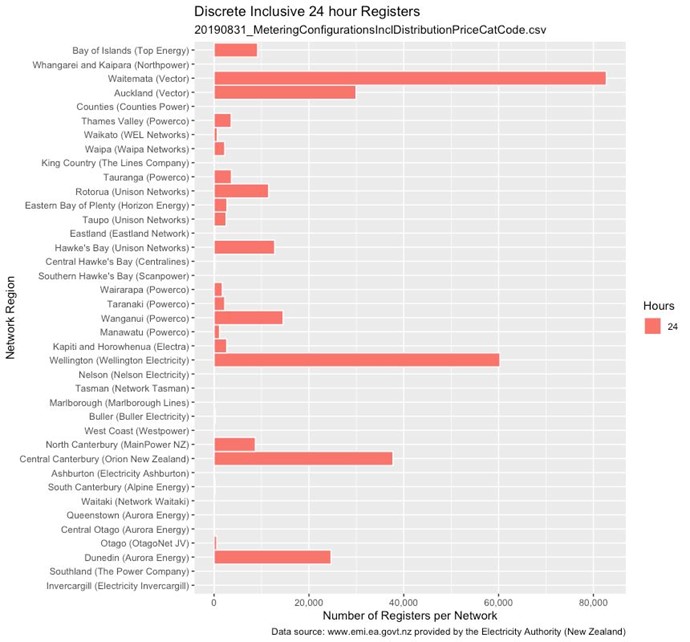
The presence of 24 hours of availability on registers with definitions other than 24 hours of availabilty is noted.
